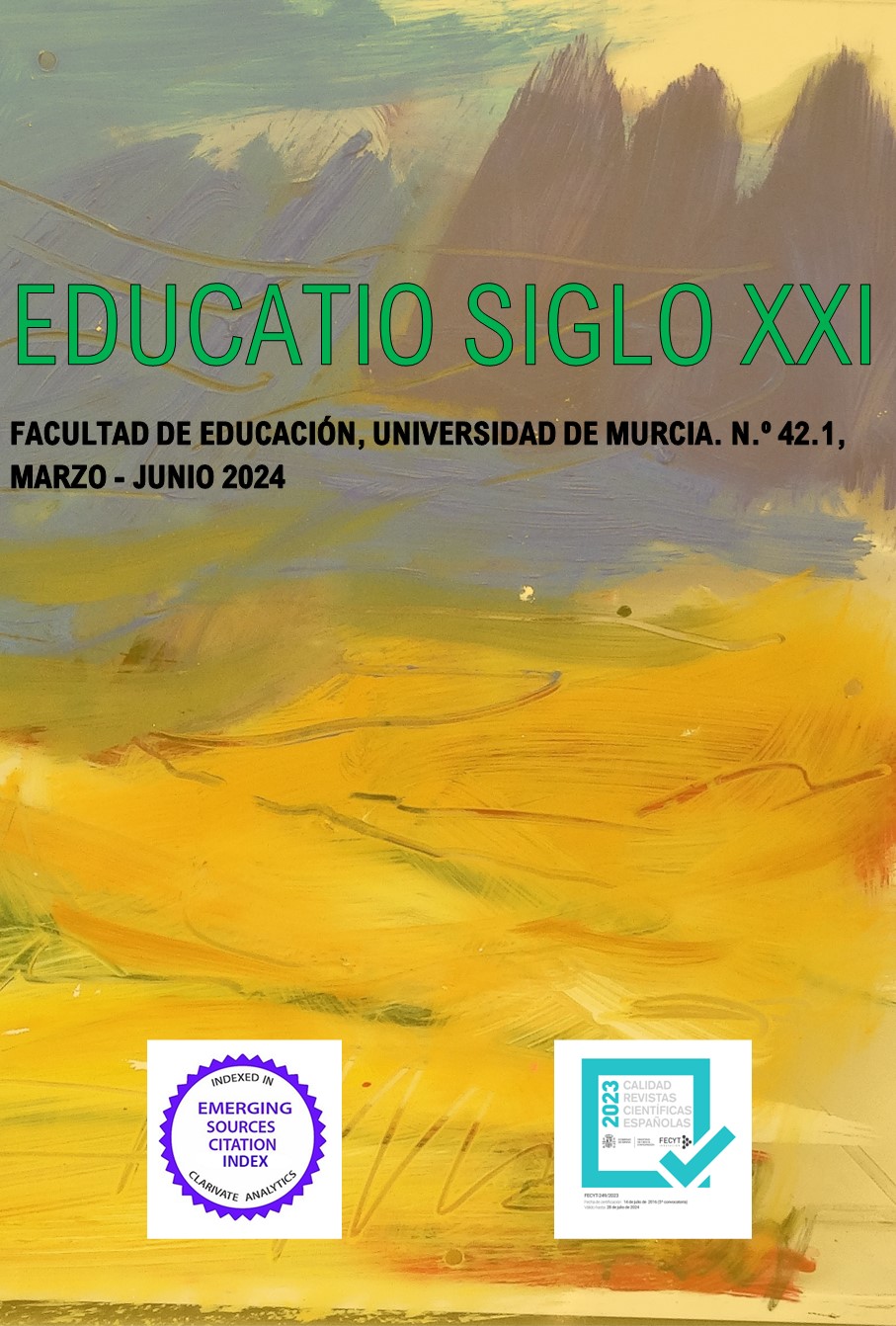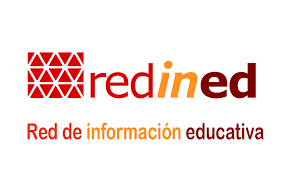Entrepreneurial development in higher education: an analysis of the relationship between creativity and technological maturity in university entrepreneurship
Abstract
University spaces originate entrepreneurial ideas that are usually evidenced in classroom tasks and some materialize in real ventures. This research seeks to understand through empirical evidence how the creative characteristics present in the academic environment affect the Development of Technological Maturity (TRL). It is a cross-sectional correlational research, with a quantitative, non-experimental approach, of a consecutive non-probabilistic sample obtained through an ad hoc instrument validated by expert judgment, with coverage of 77% of the Higher Education Institutions of the territory studied. Based on an exploratory factorial analysis with SPSS and a confirmatory one with AMOS, specific knowledge, motivation to undertake and the desired impact are identified as determining creative factors. At the same time, resorting to the analysis with Artificial Neural Networks (ANN), a model of normalized importance of the factors with 67.2% assertiveness is proposed.
Downloads
-
Abstract1045
-
PDF (Español (España))632
References
Alcaldía de Cali. (2020). Cali en Cifras. https://www.cali.gov.co/planeacion/publicaciones/137803/documentos-cali-en-cifras/
Arteaga, I. H., Alvarado Pérez, J. C., & Luna, S. M. (2015). Creatividad e innovación: Competencias genéricas o transversales en la formación profesional. Creativity and Innovation: Generic or Transversal Competences in Professional Education., 44, 135-151.
Belmonte-Lillo, V. M., & Parodi, A. I. (2018). Creatividad y adolescencia: Diferencias según género, curso y nivel cognitivo. European Journal of Investigation in Health, Psychology and Education, 7(3), Art. 3. https://doi.org/10.30552/ejihpe.v7i3.205
Camio, M. I. (2014). El rol de los aspectos emocionales en la gestión de la cultura innovadora. Revista Facultad de Ciencias Económicas, 22(2), Art. 2. https://doi.org/10.18359/rfce.622
Chan Kim, W., & Mauborgne, R. (2008). La estrategia del océano azul (Tercera). Verticales de bolsillo.
Climént Bonilla, J. B. (2014). Origen, desarrollo y declive de las competencias individuales en tiempos de incertidumbre. https://doi.org/10.5294/edu.2014.17.1.8
De la Torre, S. de la. (1997). Creatividad y formación: Identificación, diseño y evaluación (1.a ed.). Trillas.
DEPARTAMENTO ADMINISTRATIVO DE CIENCIA, TECNOLOGIA E INNOVACIÓn [COLCIENCIAS]. (2018). TECHNOLOGY READINESS LEVELS - TRL. https://minciencias.gov.co/sites/default/files/upload/convocatoria/anexo_1._technology_readiness_levels_-_trl.pdf
Díaz, S. C. P., Giraldo, A. F. R., & Buitrago, H. C. (2006). Factores resilientes asociados al rendimiento académico en estudiantes pertenecientes a la Universidad de Sucre (Colombia). 24.
Esparza Molina, F. J., Ruíz Melero, M. J., Ferrando Prieto, M., Sainz Gómez, M., & Prieto Sánchez, M. a D. (2015). Creatividad científica y alta habilidad: Diferencias de género y nivel educativo. Aula, 21(0), Art. 0. https://doi.org/10.14201/aula2015214962
Expósito, C. C., & Ciudadreal, G. (2018). El juego al servicio del aprendizaje: Inteligencias múltiples y juegos de mesa. Cuadernos de Pedagogía, 490, 138-138.
Fierro, J. Ó. O., Ramos, P. J. M., & Alcaraz, I. D. (2021). Madurez tecnológica e innovación en empresas mexicanas. 50, 24.
Fuentes García, F. J., & Sánchez Cañizares, S. M. (2021). Análisis del perfil emprendedor: Una perspectiva de género. Studies of Applied Economics, 28(3), Art. 3. https://doi.org/10.25115/eea.v28i3.4752
Gamero, H., & Ostos, J. (2020). Revisión sistemática de literatura sobre factores clave en la identificación de oportunidades de negocio. Retos, 10(20), Art. 20. https://doi.org/10.17163/ret.n20.2020.07
García, P. Á. C., Ruiz, S. S., & Almagro, M. L. B. (2019). Análisis de la creatividad de los estudiantes universitarios. Diferencias por género, edad y elección de estudios. Educación XX1, 22(2), Art. 2. https://doi.org/10.5944/educxx1.22552
Gonzalez, M., Muñoz, Y., Serna, S., Giraldo, F., & Laiseca, A. (2020). Determinantes del crecimiento empresarial en el sector manufacturero colombiano. Panorama Económico, 28, 1-15. https://doi.org/10.32997/pe-2020-2665
Gravié, R. F. (2012). La pieza clave del rompecabezas del desarrollo de la creatividad: La escuela. REICE. Revista Iberoamericana Sobre Calidad, Eficacia y Cambio En Educación, 10(2), Art. 2.
Grossman, S. R., & King, M. J. (1990). Eagles, Otters, and Unicorns: An Anatomy of Innovation. Journal of Creative Behavior, 24(2), 75-98.
Hanohov, R., & Baldacchino, L. (2017). Opportunity recognition in sustainable entrepreneurship: An exploratory study. International Journal of Entrepreneurial Behavior & Research, 24(2), 333-358. https://doi.org/10.1108/IJEBR-12-2015-0275
IBTM World. (2021). TRENDS WATCH REPORT 2022. https://www.ibtmworld.com/content/dam/sitebuilder/rxuk/eibtm/documents/14262_IBTM_TRENDS_WATCH_REPORT_2022_PDF_IMP_v6.pdf.coredownload.383541774.pdf
Innpulsa Colombia. (2021). Colombia incrementó su tasa de actividad emprendedora en 2020. https://innpulsacolombia.com/innformate/colombia-incremento-su-tasa-de-actividad-emprendedora-en-2020
Kim, J. Y., Choi, D. S., Sung, C.-S., & Park, J. Y. (2018). The role of problem solving ability on innovative behavior and opportunity recognition in university students. Journal of Open Innovation: Technology, Market, and Complexity, 4(1), 4. https://doi.org/10.1186/s40852-018-0085-4
Lloret-Segura, S., Ferreres-Traver, A., Hernández-Baeza, A., & Tomás-Marco, I. (2014). El análisis factorial exploratorio de los ítems: Una guía práctica, revisada y actualizada. Anales de Psicología, 30(3), 1151-1169. https://doi.org/10.6018/analesps.30.3.199361
Majaro, S. (1994). Marketing y creatividad. Un enfoque instrumental (1.a ed.). Diaz Santos.
Marcone-Dapelo, P., Vizcaíno, M. F. A., López, M. R., Godoy-Briceño, J., & Campos, J. G. (2020). Autopercepción de las competencias de creatividad de innovación en estudiantes universitarios en Ciencias de la Salud: Factores de desarrollo. REOP - Revista Española de Orientación y Psicopedagogía, 31(3), Art. 3. https://doi.org/10.5944/reop.vol.31.num.3.2020.29262
Martínez, M. P. P., Sandoval, E. L. L., & Vargas, T. M. G. (2019). “Análisis del Emprendimiento Universitario desde la Perspectiva de la Universidad Pública” “Caso Facultad de Ciencias Administrativas”. Ciencia Digital, 9(2), Art. 2. https://doi.org/10.33262/cienciadigital.v9i2.374
Ministerio de educación de Colombia. (2020). ÁREAS DEL CONOCIMIENTO. https://www.mineducacion.gov.co/1621/article-136452.html
Ministerio de Educación Nacional. (2020). ¿Qué es la educación superior? https://www.mineducacion.gov.co/1621/article-196477.html
Monroy Merchán, M. L. (2019). Sociedad del conocimiento y las brechas de género en ciencia, tecnología e innovación. Cuadernos Latinoamericanos de Administración, 15(29), Art. 29. https://doi.org/10.18270/cuaderlam.v15i29.2871
Mora Mayoral, M. J., & Martínez Martínez, F. R. (2018). Desarrollo local sostenible, responsabilidad social corporativa y emprendimiento social. Equidad y Desarrollo, 31, 27-46. https://doi.org/10.19052/ed.4375
OECD & Eurostat. (2018). Oslo Manual 2018: Guidelines for Collecting, Reporting and Using Data on Innovation, 4th Edition. OECD. https://doi.org/10.1787/9789264304604-en
Otzen, T., & Manterola, C. (2017). Técnicas de Muestreo sobre una Población a Estudio. International Journal of Morphology, 35(1), 227-232. https://doi.org/10.4067/S0717-95022017000100037
Padilla-Martínez, M. P., Quispe-Otacoma, A. L., Nogueira-Rivera, D., & Hernández-Nariño, A. (2016). Diagnóstico y perspectivas de fomento del emprendimiento como instrumento de desarrollo. Diagnosis and prospects for promotion of entrepreneurship as a development instrument., 37(1), 91-103.
Páez S, D., & Gracia R., J. (2011). Acercamiento a las características del universitario emprendedor en la unidad de emprendimiento empresarial de la Universidad Nacional de Colombia = An approximation to the characteristics of the professional entrepreneur in the entrepreneurship... Revista Escuela de Administración de Negocios, 71, Art. 71. https://doi.org/10.21158/01208160.n71.2011.551
Parada, L. R., Dominguez, M., & Cuadrado, L. R. (2016). ANALYSIS AND VALIDATION MODEL OF DESIGN PROPOSALS THROUGH FLEXIBLE PROTOTYPES. DYNA, 91(5), 502-506. https://doi.org/10.6036/7812
Peña, R. M., Gómez, M. del C. F., Gonzalez, M. E. G., & Hernández, A. T. de C. (2019). El desarrollo de la creatividad en la formación universitaria. Revista Cubana de Medicina Militar, 48(2(Sup)), Art. 2(Sup).
Porter, M. E. (1990). La ventaja competitiva de las naciones. Vergara.
Prado Suárez, R. C. (2004). Creatividad y sobredotación, diagnóstico e intervención psicopedagógica. http://www.biblioteca.uma.es/bbldoc/tesisuma/16801118.pdf
Prandelli, E., Pasquini, M., & Verona, G. (2016). In user’s shoes: An experimental design on the role of perspective taking in discovering entrepreneurial opportunities. Journal of Business Venturing, 31(3), 287-301. https://doi.org/10.1016/j.jbusvent.2016.02.001
Ramírez, Y., Navas, M., & López, V. (2019). Un estudio sobre la creatividad, el género, la edad y las inteligencias múltiples en alumnos de Educación Secundaria Obligatoria de España. Praxis Educativa, 23(1), Art. 1.
Ramos, C. G. G., Careaga, M. R., Caullán, A. S., Méndez, N. T., Zaraff, G. V., Díaz, G. V., & Vergara, S. Z. (2018). Género y emprendimiento. Análisis crítico en torno a la subjetividad de emprendedores y emprendedoras de la Región Metropolitana, Chile. Antropología Experimental, 18, Art. 18. https://doi.org/10.17561/rae.v0i18.3523
Rendón Acevedo, J. A., & Forero Muñoz, J. D. (2014). Sistemas Productivos Locales: Estrategias Empresariales Para El Desarrollo. LOCAL PRODUCTIVE SYSTEMS: CORPORATE STRATEGIES FOR DEVELOPMENT., 17(35), 75-94.
Ríos Tlapanco, E. I., & Urrego Castaño, C. A. (2022). Gestión de la Madurez Tecnológica Nivel 1 (TRL 1); Estrategia de Gestión de la Innovación de Producto en Procesos de Diseño Mecánico. Revista Politécnica, 49(1), Art. 1. https://doi.org/10.33333/rp.vol49n1.01
Robledo V., J., López G., C., Zapata L., W., & Pérez V., J. D. (2010). Desarrollo de una Metodología de Evaluación de Capacidades de Innovación. Perfil de Coyuntura Económica, 15, 133-148.
Rodríguez, L. A. L., Díaz, P. F., Villa Velázquez, T. de J. B., Velducea, W. V., & Valenzuela, M. C. S. (2021). Creatividad, innovación y emprendimiento una competencia holística en la educación universitaria: Revisión sistemática. Revista Publicando, 8(30), Art. 30. https://doi.org/10.51528/rp.vol8.id2206
Sternberg, R. J., & Lubart, T. I. (1997). La creatividad en una cultura conformista / Creativity in a Conformist Culture: UN Desafio a Las Masas.
Torre, S. de la. (1991). Evaluación de la creatividad: TAEC: un instrumento de apoyo a la Reforma. Escuela Española,
Varela Villegas, R. (2010). Creatividad e innovación para el desarrollo del espíritu empresarial. Publicaciones Icesi. https://www.icesi.edu.co/revistas/index.php/publicaciones_icesi/article/view/739
Villalva-Bustamante, D., F. Logroño-Rodríguez, M., F. Flores-Pulgar, T., & Naula-Erazo, B. (2021). Prioritization of Alternative Agricultural Products Based on Market Signals as a Tool for the Development of Innovative Projects. ESPOCH Congresses: The Ecuadorian Journal of S.T.E.A.M. https://doi.org/10.18502/espoch.v1i1.9610
Wesenberg, P. (1994). Bridging the Individual-Social Divide: A New Perspective for Understanding and Stimulating Creativity in Organizations. The Journal of Creative Behavior, 28(3), 177-192. https://doi.org/10.1002/j.2162-6057.1994.tb01190.x
Westhead, P., Denizucbasaran, D., & Wright, M. (2009). Information search and opportunity identification: The importance of prior business ownership experience. International Small Business Journal, 659-680.
Copyright (c) 2024 Servicio de Publicaciones de la Universidad de Murcia

This work is licensed under a Creative Commons Attribution-NonCommercial-NoDerivatives 4.0 International License.
Original work publishes in this journal is subject to the following terms:
1. Murcia University Press (the publishing house) holds the copyright of the publishes work, and favours and allows their reutilization under the use license stated in point 2.
© Servicio de Publicaciones, Universidad de Murcia, 2015
2. Work is published in the electronic edition under a license (Creative Commons Reconocimiento-NoComercial-SinObraDerivada 4.0 España (legal text). They can be copied, used, disseminated, transmitted and publicly presented, as long as: i) authorship and original publication source is acknowledged (journal, publishing house and URL of the work); ii) are not used for commercial purposes; iii) the existence and specifications of this use license is stated.
3. Conditions for self-archive. Authors are allowed and encouraged to disseminate electronically the pre-pint (before review) and/or post-print (accepted for publication) versions of their work before their publication since that favours earlier circulation and dissemination resulting in an increased chance for the authors to be cited and for the work to reach a bigger share of the academic community. Colour: RoMEO: green.







